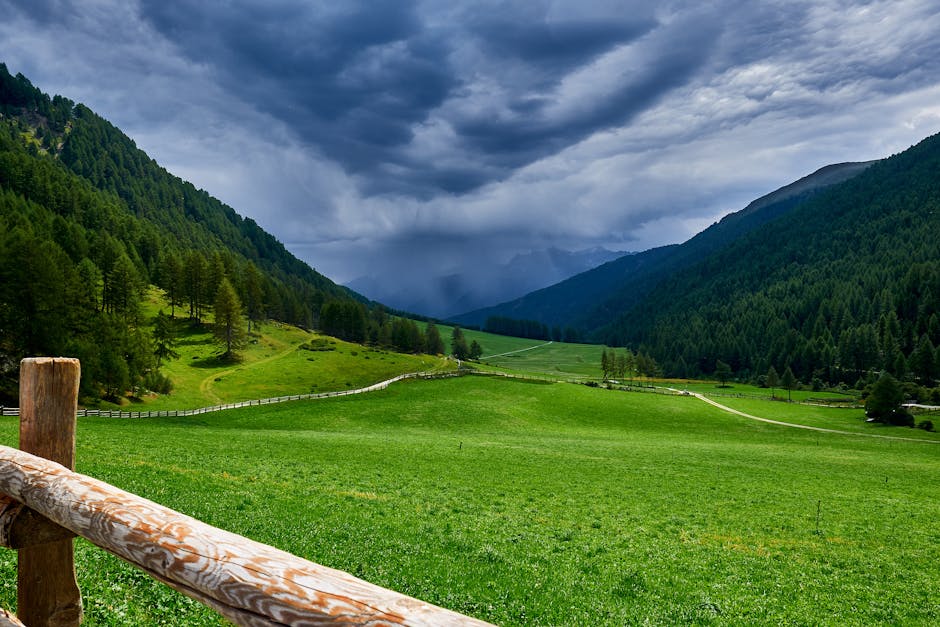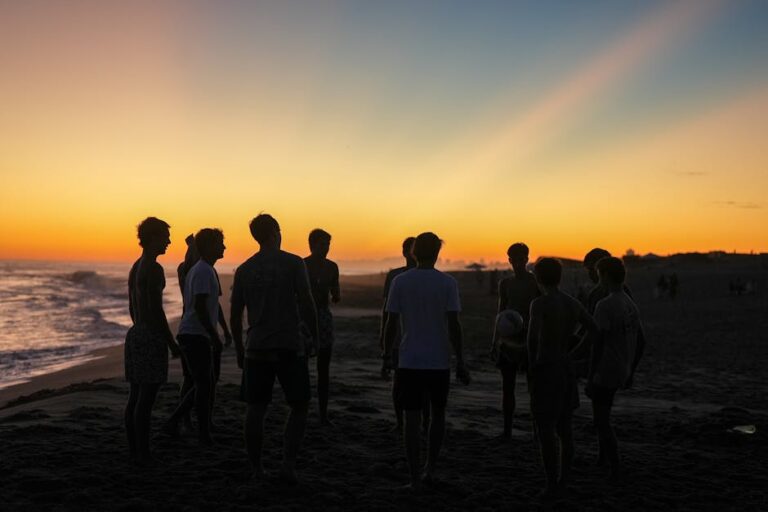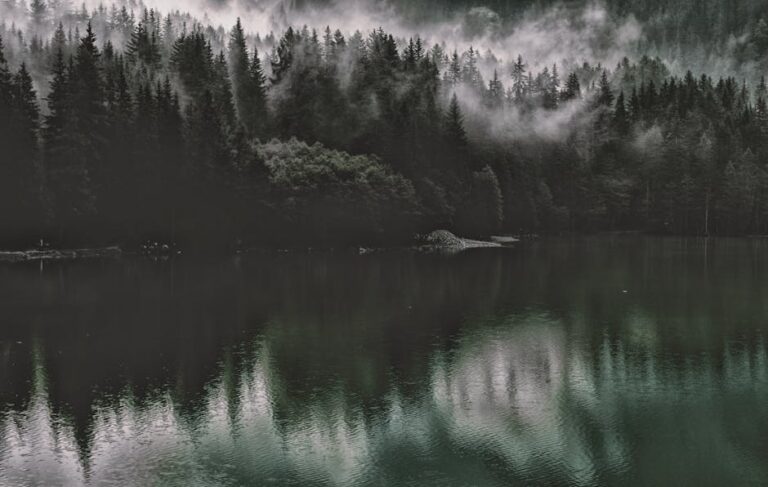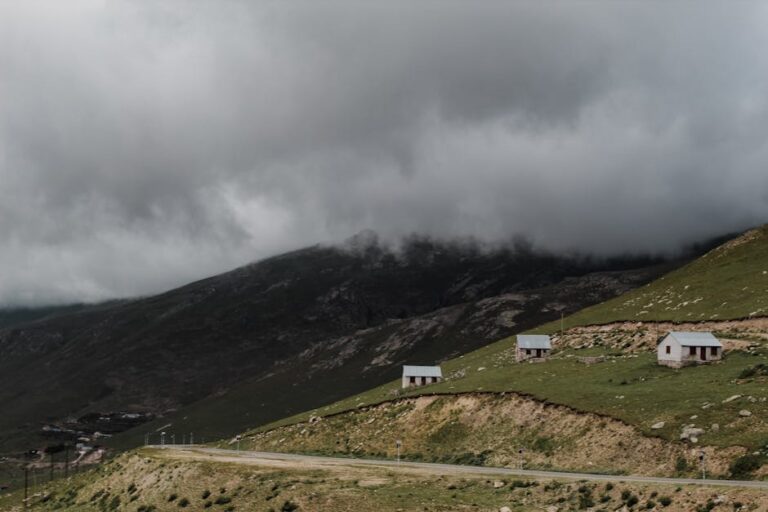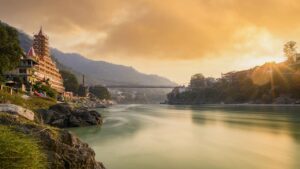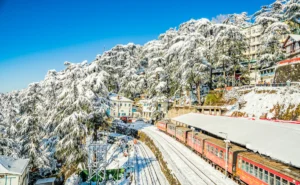So, you’re thinking about getting out of Delhi for a bit, maybe heading up to the hills in 2025? Shimla, that old British summer capital, it’s still the spot for a quick escape, and honestly, the trip up there from Delhi can be pretty wild. It’s not just about getting from point A to point B; it’s kinda part of the whole adventure. I mean, Delhi’s great and all, with its crazy energy and all the food, but sometimes you just need to breathe air that actually feels crisp, you know? And Shimla, with its misty mornings and those old buildings, it definitely delivers on that front.
I’ve done this route a few times, and each time it’s a bit different, which is cool. People always ask what’s the best way to get there, how long it takes, and what to even do once you’re there. It’s not like just jumping on a metro. Shimla’s a hill station, so the journey itself has its own vibe. You leave the flat, kinda dusty plains of Delhi, and slowly, slowly, the scenery starts changing. Trees get taller, the air gets cooler, and before you know it, you’re winding through mountains. It’s a proper change of scenery, which is probably why so many folks make this trip.
What’s interesting is how much things haven’t changed with this route, even in 2025. Yeah, there’s new tech and stuff, but the basic ways to get to Shimla? They’re pretty much the same. It’s still about getting to Kalka first, or just driving straight through. But the feelings you get, like when you first see those mountains, or when the air gets all cool and pine-scented, that stuff never gets old.
How to Actually Get There: My Take on the Options
Alright, let’s talk brass tacks. Getting from Delhi to Shimla isn’t like a quick hop. It’s a good 350-ish kilometers, and most of that is driving up a mountain road, which takes its sweet time. You’ve got a few main choices, and each one has its good and not-so-good bits.
First up, there’s the train and toy train combo. This is probably the most chill way to do it, if you’ve got time. You first gotta get on a regular train from Delhi to Kalka. There’s the Kalka Shatabdi Express, which leaves pretty early in the morning, around 7:40 AM. It’s a fast train, pretty comfy, gets you to Kalka in about four hours. And honestly, it’s a good ride. You can grab some breakfast on the train, stare out the window as Delhi fades away.
But the real magic happens from Kalka. That’s where you switch to the Kalka-Shimla Toy Train. This thing is UNESCO World Heritage, you know? It’s not fast. Like, at all. It chugs along, probably taking five or six hours for a ninety-something kilometer ride. But that’s the whole point. It goes through like, 103 tunnels (they say 102, but some count differently, it’s confusing) and over a bunch of bridges. The views are crazy good. You’re literally crawling up the mountainside, through pine forests, with villages popping up now and then. If you’re into photography, or just wanna relax and soak it all in, this is it. It’s definitely not for people in a rush, but for me, it’s a top choice just for the experience. Just make sure to book your tickets way in advance, especially for the First Class or the Shivalik Deluxe Express coaches, ‘cause they fill up super fast.
Then there’s the bus option. This is probably the most budget-friendly way, and it’s actually pretty straightforward. You can catch buses from Delhi’s ISBT Kashmiri Gate. There are Himachal Road Transport Corporation (HRTC) buses, which are usually pretty reliable. Some are regular, some are Volvo AC buses. The Volvos are way more comfortable for that eight-to-ten-hour journey. They leave at different times, day and night. Night buses mean you sleep (or try to) and wake up in Shimla, which is efficient. But you miss the views, which, let’s be honest, are a big part of the fun. Daytime buses, you get to see everything, but it’s a long sit. You do get rest stops, though, for chai and snacks. It’s a solid option if you’re trying to save a buck and don’t mind being on a bus for a while.
And finally, you can go by car. This is what a lot of people do, either self-driving or hiring a cab. It’s flexible, right? You can stop wherever you want. The road from Delhi to Shimla, via Ambala and Kalka, is mostly good. The first part, the highway to Ambala, is super smooth. It’s after Kalka that the real hill driving starts. It’s winding, sometimes a bit narrow, and you gotta be careful. Takes maybe seven to eight hours without too many stops, but traffic can really mess that up. Especially if you hit Chandigarh at the wrong time. In my experience, if you leave Delhi super early, like at 4 or 5 AM, you can avoid a lot of that city rush. Plus, seeing the sunrise on the highway is pretty neat.
Hiring a cab means you don’t have to worry about driving, which is nice because those mountain roads can be a bit much if you’re not used to them. It’s pricier, sure, but split among friends, it works out okay. What’s cool about having your own wheels is you can maybe take a detour, like stop for breakfast at a dhabha on the highway, or just pull over at a viewpoint if something looks amazing. It offers that freedom, you know?
Finding Your Spot: Where to Stay and What’s Around
Once you actually get to Shimla, whether you’re wobbling off the toy train or stretching your legs after a long bus ride, the next thing is figuring out where to crash. Shimla’s pretty spread out on a ridge, so where you stay kinda dictates your whole experience.
Most people wanna be near Mall Road, because that’s where all the action is. It’s got the shops, the cafes, the people watching. If you stay right on Mall Road or super close to it, you’re basically in the middle of everything. But heads up, places right there can be more expensive, especially during peak season. And also, you might not get the quietest sleep if there’s a lot of chatter outside. Still, being able to just step out and be in the thick of it is pretty convenient.
Then you’ve got places a little further down, or up the slopes, away from the immediate Mall Road buzz. These spots often offer better views, and they’re usually quieter. You might need to walk a bit more, maybe even climb some stairs (Shimla has a lot of stairs, just a warning!), or take one of those little elevators they have from Cart Road up to Mall Road. But honestly, walking around Shimla is part of the charm. You see all the old British-era buildings, those winding lanes, it’s pretty cool.
There are all sorts of places to stay. You’ve got your fancy hotels, which are super comfy and often have really good service. Then there are mid-range hotels, which are decent and clean. And what’s really popped up more lately are homestays and guesthouses. These can be really nice, sometimes run by local families, and you get a more personal feel. I’ve stayed in a few, and it’s usually a more authentic experience, sometimes even with home-cooked meals. Plus, they can be a bit cheaper than the big hotels.
Booking stuff for 2025? It’s all online now, obviously. Apps, websites, you know the drill. My advice is always to look at the reviews, especially about things like hot water and heater availability if you’re going in winter. Also, check how far it is from the Mall or anything else you care about. Some places boast “Mall Road view” but are actually a twenty-minute hike away, and that can be a real pain if you’re carrying bags or just tired.
Beyond Mall Road: What to Actually Do Up There
Okay, so you’re in Shimla. You’ve probably walked Mall Road a few times, maybe bought some woolies you didn’t really need. But Shimla’s got more to it than just that main street.
One of the big ones is Jakhu Temple. It’s on the highest peak in Shimla, and there’s this giant Hanuman statue up there, like, really huge. You can hike up (it’s a bit of a climb, not gonna lie, but the path is pretty clear), or you can take the ropeway. The ropeway is definitely easier and the views on the way up are amazing. Once you’re at the top, besides the temple, you get this panoramic view of Shimla and the surrounding mountains. It’s breathtaking, especially on a clear day. Just watch out for the monkeys up there; they’re notorious for snatching glasses or anything shiny. Seriously, don’t carry food openly.
Then there’s Kufri. This isn’t exactly in Shimla but it’s a super popular day trip, like a half-hour drive away. In winter, Kufri turns into a snowy wonderland and people go skiing or tobogganing. In summer, it’s still pretty, with horse rides and some fun parks. It’s a bit touristy, but if you like that kind of thing, it’s fine. I mean, who doesn’t like riding a horse through a forest, even if it’s a short ride?
You can also check out Chadwick Falls. It’s a bit out of the main town, nestled in a forest. You gotta walk a bit to get to it, but it’s a peaceful spot. Not a huge, roaring waterfall, but it’s nice and green, a good escape from the crowds if you want some quiet time.
And what about just chilling? Shimla’s great for that too. Find a quiet cafe, grab some coffee or hot chocolate, and just watch the mist roll in or the clouds drift by. The Christ Church on the Ridge is pretty iconic; it’s one of the oldest churches in North India and looks super cool, especially when the sun hits its stained-glass windows.
Walking through the local bazaars, like Lakkar Bazaar (known for its wooden crafts), can be fun. You can find some unique souvenirs, and it’s interesting to see the local life happening. For me, part of the joy of being in Shimla is just soaking in the atmosphere, the old-world charm mixed with the buzz of tourists. It’s a pretty unique place, definitely not like any big city.
A Few Things I Wish I Knew Before My First Shimla Trip
Going to Shimla for the first time can be a bit of an eye-opener. There are a few things I learned the hard way, or just figured out over time, that might make your trip smoother.
Packing clothes: This is a big one. Even if you’re going in summer (May-June), the evenings in Shimla can get really chilly, especially if it rains. Always, and I mean always, carry layers. A light jacket or a warm shawl, even a light sweater, is essential. And if you’re going in winter, you better pack some serious thermals, woolens, and a good, heavy coat. It gets freezing, like proper freezing. Don’t forget comfortable walking shoes either. You’ll be doing a lot of walking, stairs, and slopes. Flip-flops? No way.
The Mall Road rule: Vehicles, other than emergency ones, aren’t allowed on Mall Road. So, if your hotel is on Mall Road, you’ll probably have to get dropped off at a point below or above it and walk the rest of the way with your luggage. This is where those coolies with their head loads come in handy. They’ll carry your bags for a fee, and honestly, they earn it. Don’t try to be a hero and haul three suitcases up those hills yourself.
Food: Shimla has a lot of places to eat. From fancy restaurants to little street food stalls. Try some local Himachali food if you get a chance, like siddu (a kind of steamed bread often eaten with ghee or dal) or chickpea dishes. And if you like momos, there are plenty of options. Just be a bit careful with street food, like anywhere else; go for places that look busy and clean.
Money and connectivity: Most places in Shimla accept digital payments now, but it’s always good to have some cash on hand, especially for smaller shops or street vendors. ATMs are available, but sometimes they run out of cash during peak season. Mobile network coverage is generally good, but in some really secluded areas, it might be patchy. It’s not like being completely off the grid, though.
Weather can change fast: One minute it’s sunny, the next it’s raining or foggy. The mountains are unpredictable. Be prepared. That’s why the layers thing is so important. A small umbrella or a light rain jacket isn’t a bad idea, even if the forecast looks clear.
And finally, just relax and enjoy the vibe. Shimla isn’t a place to rush through. It’s a place to stroll, to watch the clouds, to feel the cool air, and to kinda step back in time a little bit. It’s a proper getaway.
FAQs About Delhi to Shimla travel
Q1: What’s the best time to visit Shimla from Delhi?
A: It kinda depends on what you’re looking for. For pleasant weather, like not too cold but also not super hot, April to June and September to November are great. If you wanna see snow and experience winter fun, then December to February is your best bet, but it gets really, really cold. Monsoons (July-august) make the hills super green, but there can be landslides, so road travel gets tricky.
Q2: Is Shimla an expensive place to visit?
A: Nah, not really. It can be, if you pick super fancy hotels and eat at high-end places all the time. But you can totally do Shimla on a budget. Bus travel is cheap, and there are lots of affordable guesthouses and places to eat. It’s pretty accessible for most budgets, I think.
Q3: How many days should I spend in Shimla?
A: For a decent trip from Delhi, I’d say 3 to 4 days, including travel time, is good. That gives you one full day for travel up, two full days to explore Shimla and maybe do a day trip to Kufri, and then one day for the journey back. Any less than that and it feels rushed.
Q4: Is the road trip from Delhi to Shimla safe?
A: Yeah, generally it’s safe. The highway part is good. The hill road from Kalka to Shimla is winding, and you need to be careful with turns and other traffic. During heavy rains, like in monsoon, there can sometimes be landslides, so it’s always smart to check the weather and road conditions before you go. But usually, it’s a pretty smooth drive, just slow down on the mountain bits.
Q5: Can I find vegetarian food easily in Shimla?
A: Absolutely! India, right? Vegetarian food is everywhere. From local Himachali dishes to North Indian staples, you’ll have no problem finding plenty of vegetarian options at pretty much every restaurant and food stall. Lots of great street food too, and that’s usually veggie-friendly.




